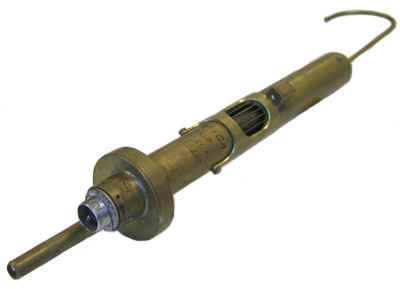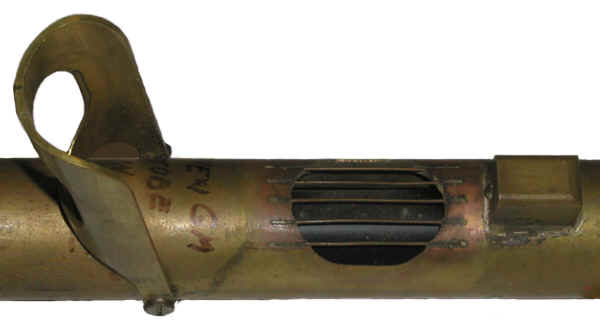Hanford Air Monitor Sampling Head (mid 1940s to 1957)
This device is the sampling head of a very early continuous air monitor. It was produced at the Atomic Energy Commission's Hanford facility sometime from the mid 1940s to 1957.

Quoting the donor's (Ron Kathren) description: "The operation of this Hanford designed and fabricated device was simplicity itself. It is simply a G M detector in a brass tube with a window cut into it. The swinging gate over the window could be opened to permit a piece of filter paper to be placed over the wire "bars" of the window. The gate would then be closed to fix the filter in place; the wires provided support when air was drawn through the filter by connecting the open end of the small brass tube [lower left corner of photo] at the bottom (next to the high voltage connector for the GM) to a vacuum pump."
"A hook was provided at the top so that the sampling head could be hung in the workroom. As noted on the side, it had a new tube installed on May 17, 1957, so that it is at least that old. Talking with some old timers here leads me to the conclusion that devices of this or very similar designs were in use during the 1940s. The initials LVZ stand for Lawrence Victor Zuerner, a Hanford instrument specialist."

The above photograph shows the window where the filter paper would be placed. You can barely make out the glass walled GM tube inside because it is painted black.
Overall length: 18"
Diameter of brass tube: 1 1/4"
Window opening: 1 3/8"
Donated by Ron Kathren.
Reference
Ron Kathren, personal communication
